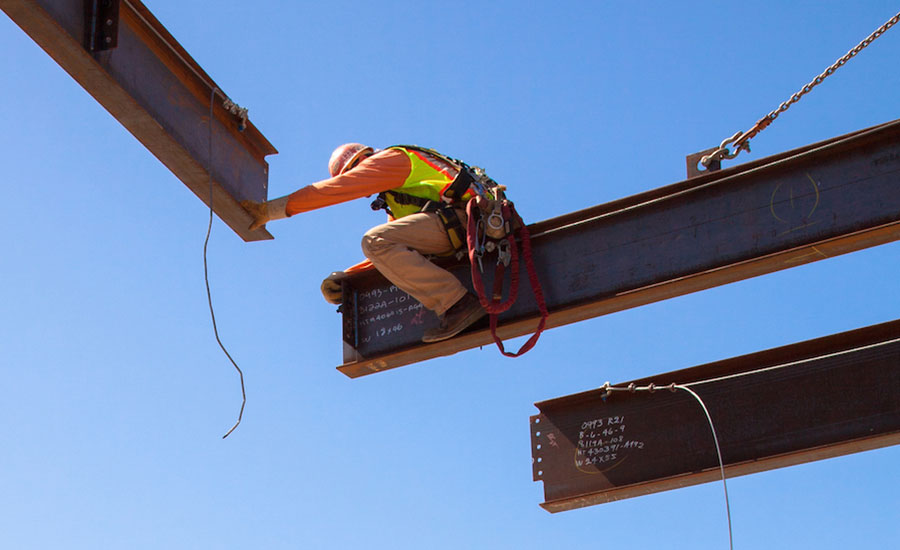On the heels of a hot year for industry consolidation in 2014 with high-profile global megamergers that culminated in giants URS Corp. and AECOM paired into a $20-billion behemoth, there were fewer headline-grabbing links in 2015. Even so, dealmaking was still plenty active, particularly by middle-market and niche firms.
In the design sector, Steven Gido, partner at M&A consultant Rusk O'Brien Gido & Partners, points to "global participants still digesting and integrating sizable targets over the last 24 months as well as a number of prominent A-E organizations undertaking high profile restructurings and leadership successions." He expects "many of the large E&C firms may still be on the M&A sidelines in 2016," also due to "oil and gas deals ... on hold or nonexistent for the next 12-18 months."
Gido points to "macro uncertain headwinds" for CEOs in 2016, including the upcoming election, higher interest rates, tight hiring markets, and global emerging market slowdowns.
Still, deals such as Italian contractor Salini Impregilo's $400-million purchase of Connecticut-based Lane Industries, Montreal-based WSP’s $425-million purchase of MMM Group, U.K.-based Intertek’s $330-million acquisition of PSI and Tetra’s Tech’s $96-million purchase of Australia's Coffey International indicate that cross-border merger and acquisition "is indeed active and that strategic buyers are still on the hunt for blue-chip consultancies in the U.S. and beyond," says Gido. He sees the U.S. as a key buyer's market, with new highway funding enacted and strength in other construction markets. "Brazil, Australia and Canada all are dealing with oil & energy and mining fallout and a slump in prices and demand."
According to experts, mid-size firms (from $25 million to $250 million in revenue) will be most active in the coming year, with more pressure for market and geographic diversity and ownership transition. Management and M&A consultant Morrissey-Goodale reported 230 design and consulting deals last year, predicting a 10% rise in 2016. Hot markets will be water/wastewater, transportation, power and alternative energy, says Gido.
KBR was one firm quite active on the M&A front following new CEO Stuart Bradie's bold moves in 2015 to reshape the firm and sell off its riskier power, infrastructure and buildings design and construction units to focus on technology, oil and gas and consulting—and the bottom line. In completing te purcase of KBR's infrastructure Americas unit on Dec. 31, Canada-based Stantec gains a position in Gulf Coast region transportation, water/wastewater, and aviation markets.
Many were skeptical how the AECOM-URS pairing, creating a 90,000-person firm, would survive its first year. Layoffs and a reorganization sent many executives fleeing to rival companies. The firm lost its coveted role on a huge U.K. nuclear cleanup early in early 2015 when the government opted to take control, and quarterly reports for the year have showed bumps in the road.
But at year-end, Wall Street appears optimistic about the enlarged firm's results and potential, particularly with new transportation funding enacted and $110 million in cost synergies delivered as of mid-December. "With the worst of the heavy lifting associated with the URS deal now complete, AECOM can be more outward, driving greater revenue opportunities longer term," said Credit Suisse construction sector analyst Jamie Cook in in Dec. 15 report. But Andrew Wittmann, Baird Equity Research's industry sector analyst, cautioned that while "good backlog trends are a positive, revenue conversion remains spotty on weaker end markets." He added that URS integration issues will continue to "demand considerable management resources."
Another industry firm whose headlines surged in 2015 on both good and not-so-good news was Montreal-based SNC-Lavalin, as it struggled for business results while fighting the lingering ramifications of serious ethics missteps under prior leadership. The firm started 2015 stung by federal corruption charges linked to the past misdeeds but ended the year cleared to bid on public works contracts while those charges await trial or a settlement the firm seeks.
In between were the firm's wins of major Canadian public sector infrastructure and energy contracts and the departure of Robert Card, the American brought in three years earlier to stabilize the firm ethically and financially. The latter has proved a bigger challenge for Card, who SNC-Lavalin directors replaced in September with COO Neil Bruce to boost needed project execution improvements.
How the firm fares in its legal and financial issues in the coming year will be much watched by peers, analysts and media. Also of interest will be how AEC firms and Canada's public works agencies cope with implementing new ethics recommendations released in 2015 following two years of extensive probing into widespread public works contracting corruption.
"In SNC-Lavalin, we see a company with a new, execution-focused CEO and a record backlog that is essentially free of the over-budget projects that have troubled the company over the last three years," said Yuri Lynk, Montreal-based sector analyst for Canaccord Genuity Inc. in a Jan.4, report. He notes the firm's valuable infrastructure concession, but cites challenges in its oil-and-gas sector exposure and need to cut expenses.
The extent of continuing fallout from the global oil and gas price plunge also will be on watch lists. "Some economists suggest that it may be several years before pricing gets back to 2015 highs," says W. Chris Daum, an FMI Senior Managing Director. "From a construction standpoint, this will result in the delay or cancellation of capital spending that represented a significant share of forecast construction growth." But he sees some silver lining in lower costs for energy-intensive manufacturing projects, and somewhat reduced sector workforce demands.
"The slowdown in oil and gas markets has also provided strategic acquirers with an opportunity to enter the once red-hot sector at reasonable valuations and position themselves for long-term growth in a rapidly evolving market," says Daum.
Analyst Lynk says that "while O&G capex cuts cast a long shadow over the sectors," backlogs for E&C fims followed "at or near record levels thanks to several infrastructure mega-projects booked late in 2015. We expect infrastructure spending to be flat to up in Canada this year and increase 6% in the US, where demand for engineering services continues to slowly improve."
More pressure from private equity firms looking to gain from buying into or selling off their industry holdings, and activist investors pushing boards and CEOs for new strategies and better returns, also made headlines in 2015. Hill International and MYR Group Inc. are among firms whose investors mounted bids for greater board control and more aggressive approaches that could include recapitalization and selloff.
Change Churns in C-Suites
Merger mania, board whims, career cycles and need for new and diverse innovators continued to churn change in construction C-suites.
Jacobs Engineering reached outside of construction in August for its new CEO, tapping Steven J. Demetriou, a former aluminum producer firm chief, after an eight- month search. Australia's Cardno hired American Rich Wankmuller to explore new strategies for the struggling firm, and Gilbane reached outside the firm and its controlling family owners for the first time in naming as president, former CH2M executive Mike McKelvy. He added the CEO role on Jan. 1.
Industry also sought diversity in other ways, with women named to head New York City Transit and Yale's School of Architecture for the first time. The appointees—Ronnie Hakim and Deborah Berke, respectively, are among others who moved up to new leadership spots on corporate, agency and academic ladders.
Among noted industry business and technical leaders who died in 2015 are bridge design engineers Herbert Rothman and Abba Lichtenstein; Fred Berger, former chairman of designer Louis Berger and a global activist; water reuse expert Richard Arber; construction equipment innovators Ed Malzahn and Lee Kramer; and pioneering architects Michael Graves and Frei Otto.
Following the sudden death of its 47-year-old CEO Pierre Berger in late October, French contracting giant Eiffage reached into the ranks of rival Vinci to find a successor, naming Benoît de Ruffray as chairman and CEO on Dec. 9.
As generations change, industry firms are under the gun to mount more innovative strategies to retain and groom their pool of young leaders. "Consider more pay for performance and head-turning bonuses to get the most out of your millennials," suggests Mick Morrissey, a Morrissey-Goodale partner.
"Good people will be even harder to find in 2016," adds his partner Mark Goodale. "But the real struggle (or opportunity) is building the machine to fill open positions and keep up with future demand. Plugging holes any which way will not be a sustainable strategy in 2016’s highly competitive environment for industry talent."
More firms are boosting use of social media as a workforce tool. But many also have learned the hard way that it can backfire, with negative postings increasing in number and corporate impact.
FMI's Daum sees a trend among industry firms to "bifurcate the human resources function to focus on people strategies” in addition to traditional compliance tasks. "In short, strategic HR is key to keeping up, and ideally pulling ahead, in the war for talent."





